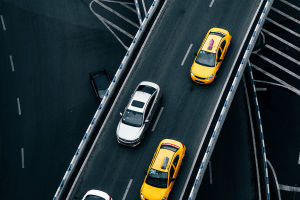
HI Lykkers! Capturing the energy of city traffic can be both exciting and challenging.
The hustle and bustle of fast-moving cars, pedestrians, and cyclists creates dynamic scenes that tell the story of urban life.
However, photographing such chaotic scenes requires skill and patience to achieve striking results. Whether you're trying to convey the rush of the city or capture the perfect long-exposure shot, these tips will help you master the art of photographing busy city traffic!
1. Timing is Key: Know When to Shoot
City traffic is always changing, and capturing the right moment requires perfect timing. For daytime shots, early mornings or late afternoons can provide softer light, allowing for dramatic shadows and highlights. During these golden hours, the streets are often less congested, giving you a chance to photograph traffic without overwhelming the frame.
Nighttime offers the opportunity to use long-exposure techniques to capture the movement of lights, creating streaks that represent the flow of traffic. Timing your shots according to the light can drastically improve the atmosphere of your photos.
2. Use Long Exposure for Motion Blur
To capture the essence of busy traffic, long-exposure photography is one of the best techniques. By using a slower shutter speed (1/10 second or longer), you can create beautiful motion blur that emphasizes the speed and movement of vehicles. This works particularly well at night when the headlights and taillights of cars create vivid streaks of light.
A tripod is essential to avoid camera shake, especially in low-light conditions. Experiment with exposure times to see how different lengths affect the flow and intensity of the traffic in your images.
3. Focus on Composition: Frame the Scene Effectively
Composition plays a huge role in conveying the energy of a busy street. Instead of just capturing the traffic, think about how you can frame the scene to tell a story. Look for interesting angles, such as high vantage points, bridges, or underpasses, to give your shot a unique perspective.
Incorporating architectural elements or pedestrians into the frame can add layers to your composition, creating a sense of depth and dynamism. Don’t forget the rule of thirds – positioning the main subject or focal point off-center often results in more balanced and visually engaging photos.
4. Play with Light Trails: Create Visual Impact
One of the most iconic images of city traffic is the light trail. With using a slow shutter speed, you can capture the lights from moving vehicles, creating glowing lines that wind through your shot. To create a strong visual impact, look for intersections, roundabouts, or roads with a lot of curves, where the lights will form interesting patterns.
You can experiment with different shutter speeds (from several seconds to minutes) to capture varying lengths of light trails. Using an aperture of around f/8 to f/11 will help ensure that the entire scene is in focus.
5. Embrace the Chaos: Incorporate Street Life
The beauty of city traffic isn’t just in the vehicles—it’s in how people interact with the streets. Pedestrians, cyclists, vendors, and other street elements add life to the scene. Capture a moment where a pedestrian crosses the street with the blur of cars passing by, or wait for the perfect timing when a cyclist cuts through the flow of traffic. This adds context to the bustling city and gives a sense of scale.
6. Adjust Your Settings for Maximum Control
When photographing busy traffic, it’s crucial to adjust your camera settings to maintain control over your shot. For daytime shooting, use a smaller aperture (around f/8 to f/16) to keep more of the scene in focus. To achieve motion blur, set a slower shutter speed (1/30s or slower), but make sure your ISO is low to avoid overexposure.
For nighttime shots, a tripod is essential to keep your camera stable, and using a remote shutter or timer can prevent camera shake. Test different settings to find what best suits the scene and the mood you’re trying to create.
7. Consider the Weather and Atmosphere
Weather conditions can dramatically affect the mood of your city traffic photos. Rainy days create reflections on wet streets, enhancing the lighting and adding texture to your images. Fog or mist can add a layer of mystery and soften the chaos of the scene, while clear, bright skies may highlight the sharp details of traffic.
Overcast weather is perfect for soft, diffused light, reducing harsh shadows and giving your shots a more even tone. Always adapt your approach based on the weather to maximize the impact of your photos.
Photographing busy city traffic is about more than just capturing cars on a road. It’s about freezing a moment in the constant flow of movement, capturing the energy, light, and life of the urban environment. With using techniques like long exposure, thoughtful composition, and considering the timing and atmosphere, you can transform the ordinary into extraordinary.
Whether you’re trying to convey the chaos or beauty of a city’s rhythm, these tips will help you tell the story of the streets!
UNIQUELY Capture Any City! - Urban Photography Tips!
Video by Brock Wunder


